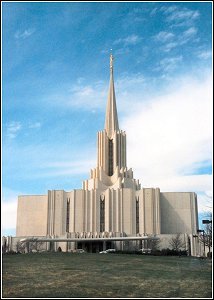



This past Saturday Tyler and I took a little road trip down to Manti to attend a temple session and go to the pageant there. It was a random thing we decided to do the day before. We ended up going to the 12:30 session Saturday afternoon and we were glad that we did. The temple is beautiful! I think a picture doesn’t really capture how beautiful the temple is there, but I am posting several that we took though hehe.
History:
The Manti Utah Temple is the third temple dedicated in Utah (the first being St George, then Logan). It was announced on June 25th, 1875. The groundbreaking was on April 25th, 1877 by Brigham Young. At the time of the ground breaking Brigham Young told Warren S Snow that the site had been where Moroni, a prophet of the Book of Mormon, had dedicated for a future temple. There was a private dedication on May 17th, 1888 by Wilford Woodruff and a public one on May 21st to 22nd, 1888 by Lorenzo Snow (the only temple dedicated by him). It is interesting to note that it cost 1 million dollars to build the temple in the late 1800s, which is a lot of money now but just think of how much that was then. It was also completely built by people who volunteered their time to build it. I think this shows how great of sacrifice these early pioneers made to build this temple. They truly saw the importance of giving their all for the Lord and building up His Kingdom on the earth. The Manti Temple was also closed for four years in the 1980s for renovations. It was then rededicated on June 14-16th, 1985 by Gordon B Hinckley.
Architecture/Décor:
The Manti Utah Temple is one of the castle style temples (the others being St George and Logan). Its architecture was influenced by Gothic Revival, French Renaissance Revival, French Second Empire and American Colonialism. The outside looks like a random castle from Europe places in a small secluded town in Utah. The insides are amazing. The murals in this temple are awesome! I loved the inside. The creation room and world room where beyond description. The creation room showed evolution of animals in the murals, and the world room showed the history of the world in the murals. Every room had new eye candy. I would highly recommend this place if you are temple worthy and want to see some amazing architecture.
Helpful things to know if visiting the temple:
Location:
The temple can be seen quite far away as you drive towards it. It is on Hwy 89 on the North side of town. It is built on a beautiful hill overlooking the town. If you are driving from the Salt Lake/Provo area, I would highly recommend driving to Nephi and then going down through the town of Moroni to go to Manti. It is the most direct route. Beware though there are a lot of speed traps (with many small towns to go through with reduced speed limits), and the road has many curves and deer (hence possibly dangerous at night).
Scheduling and Temple Clothes:
The temple is a large enough temple you don’t need to call ahead to schedule a time. A session is every hour on the half hour. During pageant times the last session is earlier at 3:30, to keep in mind if you want to go to a session and then go to the pageant. Rental temple clothes are also available here too.
If you wish to learn more about this temple check these places out (these were also the places where I got my information):
Manti Utah Temple. http://www.ldschurchtemples.com/manti/
Manti Temple sign at the Manti Utah Temple grounds.



